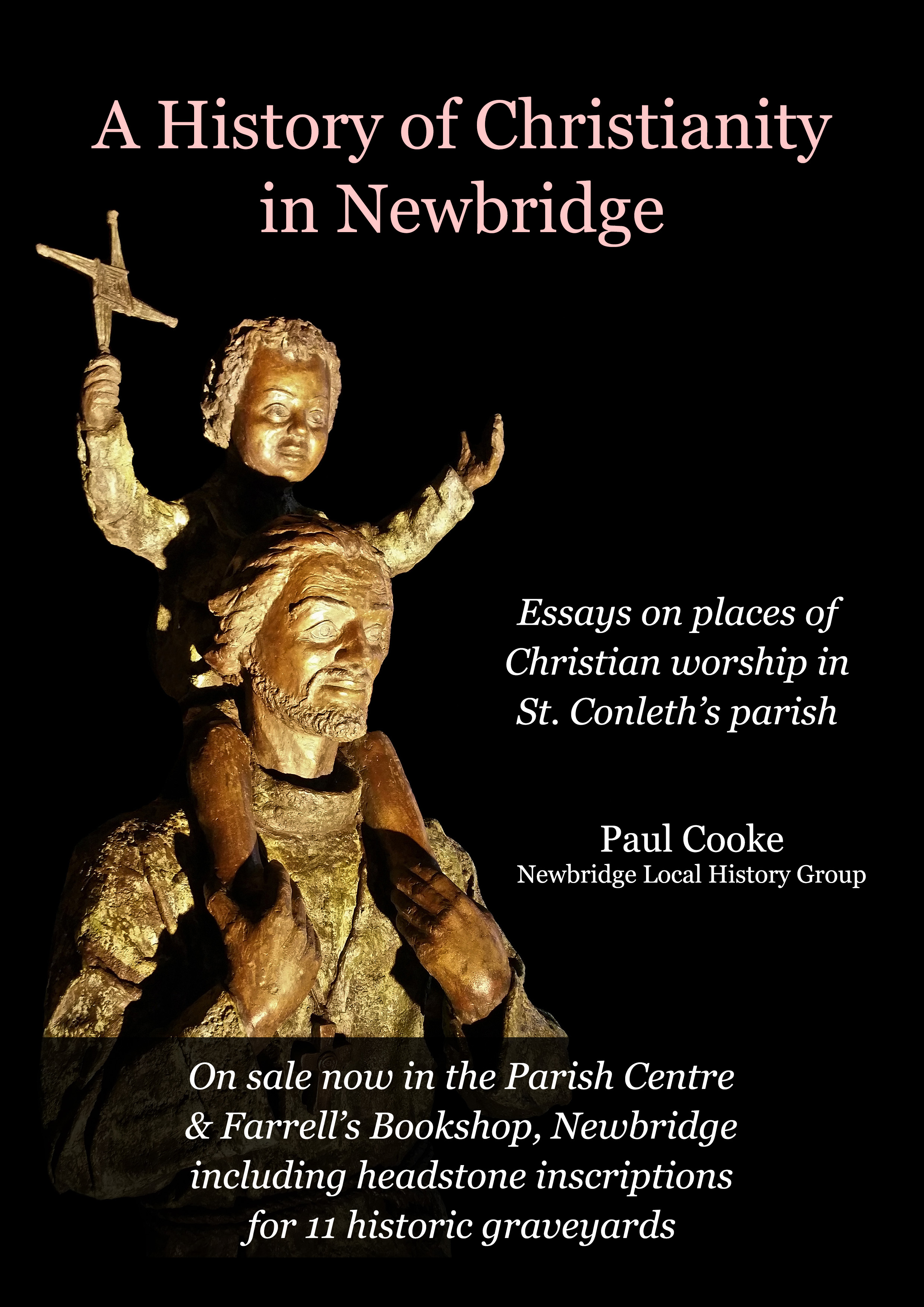Newbridge in 1855
NEWBRIDGE in 1855.
Source: Thomas Lacy, Sights & Scenes in our Fatherland (1863)
Leaving this flourishing small place, the tourist, without much loss of time, may proceed to Newbridge, a comparatively new and thriving town, consisting of one long and wide street; the military barracks, with their yards and offices, forming one side of it, and the new and fresh range of houses, with their neat and commodious shops, the other side. This town presents the appearance of much comfort and prosperity ; the shops, which for the most part are licensed to sell spirituous liquors, being well frequented by the military, of which there was, at this time, an unusually large number in the town. Indeed, from the number of the troops, and from the money necessarily spent by them, which falls, as it does, into the hands of a comparatively small number of persons, the town could be scarcely anything but prosperous.
Beyond the business part of the town, in a westerly direction, evidences of taste and comparative refinement present themselves. These are manifested in the neatness and beauty of the cottages, which, in detached groups of three or four dwellings, and in some instances of single ones, extend to a distance of more than a quarter of a mile. They are for the most part thatched, with railed-in areas in front, which are planted with ornamental shrubs and flowers, that, together with the creepers which overspread the walls, present a really delightful appearance, while they gratify the senses by the fragrance of their perfume.
About a quarter of a mile beyond these nice dwellings is situated the Protestant church, a neat, small edifice, with an embattled tower, of corresponding proportions. The body of the church is enveloped in a rich coating of ivy, whose luxuriance is such, as almost to render invisible its lancet windows. This nice house of worship is called Moorfield Church, it being built on a part of the estate of Ponsonby Moore, Esq., whose fine house and demesne are situated in its immediate vicinity.
Near the church is the hotel kept by Mr. P. Doyle, a very respectable and well-conducted establishment, with which is connected extensive posting.
The barracks, which were built for cavalry, are very extensive, and when viewed from the centre of the principal square, display three sides of an extended oblong—the central range being about 250 feet in length, and the wings about 120 feet in depth. This square comprises an area of considerable extent, and affords ample space for parade and drill purposes for all the troops stationed in the barracks. The back square, which leads to the extensive stables, is entered in the middle of the central range by a capacious arch, surmounted by a pediment containing a clock; while above the pediment rises an ornamental tower, crowned with a cupola, from which springs a weathercock.
There were within the barracks at this time about 700 men and 1,000 horses, the disparity between the men and horses having been occasioned by so many of the former being drafted to the seat of war. The following detachments were then stationed there :—the Scots Greys, or 2nd Dragoons ; the 4th Dragoons; the 5th Dragoons; the 8th Hussars; the 11th Hussars; and the 3rd Dragoons. The last mentioned was a full regiment, and the others depots. In addition to these, there was also stationed here a battalion of the Horse Artillery. In the eastern end of the town the river Liffey is crossed by a stone bridge.
The Catholic church, a new and very fine edifice, dedicated to St. Conleth, Bishop of Kildare, is situated immediately southeast of the bridge. It consists of a nave, choir, and chancel, and is a substantial structure, in the English style of the twelfth century, 120 feet in length, and 50 in breadth. Handsome Gothic windows, five in number, appear on each side of the church; besides the lancet-shaped windows, one in each of the five sides of the eastern projection, which forms the chancel. Beneath the dome of this polygonal space, and within a Gothic arch of lofty and grand proportions, were placed, on the 23rd of January, 1859, the splendid altar and tabernacle, manufactured by Mr. Kirwan, of Bolton Street, Dublin. These strikingly beautiful specimens of native taste are composed of Italian and Irish marbles, from Carrara, Sienna, Cork, and Galway.
North of the bridge, a very delightful prospect presents itself, in which are included the convent, chapel, and school of the pious brethren of the Dominican order. These interesting and handsome structures are situated at the extremity of a rich lawn on the western bank of the Liffey, and cannot fail to attract the notice of the stranger who visits this rising place. The convent and chapel of the pious fathers are dedicated to St. Thomas Aquinas, and their seminary is called after him. The principal hotel, a good house, is situated in this end of the town.

